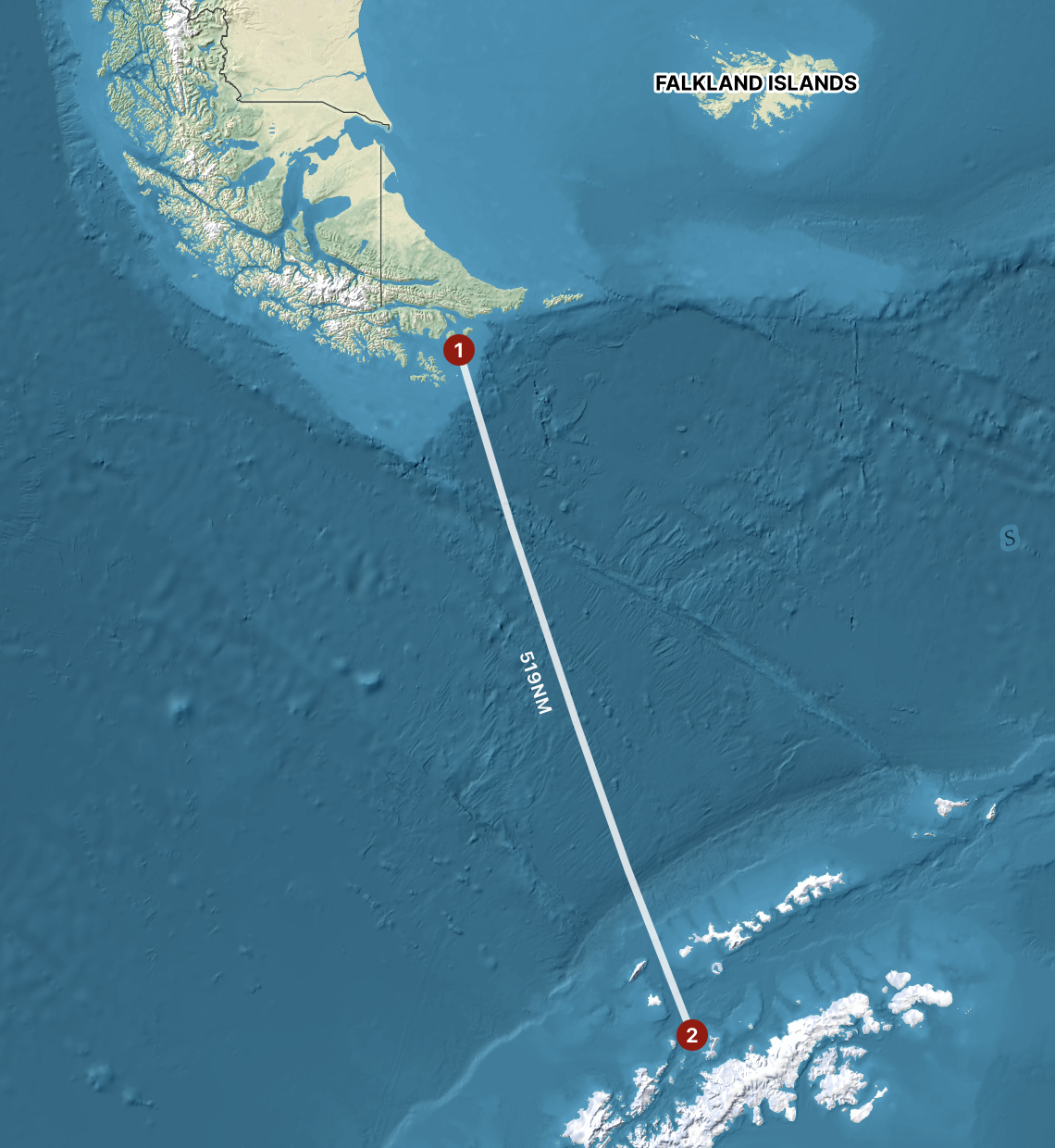Crossing the Drake Passage- What to Expect on Your Antarctic Cruise
For most visitors to Antarctica, crossing the Drake Passage is unavoidable. This stretch of ocean between Cape Horn and the South Shetland Islands links South America to the Antarctic Peninsula. It is known as one of the most dynamic bodies of water on Earth, shaped by the Antarctic Circumpolar Current, strong winds, and frequent storms.
The Drake Passage has a fearsome reputation, but not every crossing lives up to the legend. Some days it is calm enough to be nicknamed the “Drake Lake”, while on others the “Drake Shake” delivers powerful swells and rolling seas.
Location of the Drake Passage
The Drake Passage spans around 800 kilometres (500 miles) of open water between Cape Horn in southern Chile and the South Shetland Islands north of the Antarctic Peninsula. Because there is no landmass to block the flow of water, the Antarctic Circumpolar Current pushes vast volumes of ocean through this gap. This current connects the Atlantic, Pacific, and Southern Oceans, generating constantly shifting sea conditions.
Cruise ships usually take around two days to cross, making the Drake both the gateway to Antarctica and a significant part of the journey.

What a Drake Passage Crossing Is Like
No two crossings are the same. The experience depends on wind direction, wave height, currents, and season. Travellers can expect:
-
Rolling motion: Swells often create a noticeable pitch and roll. Sensitive passengers may feel seasickness.
-
Variable seas: Smooth crossings are possible, but confused seas with waves from multiple directions can be more challenging.
-
Wildlife sightings: Albatrosses, petrels, and occasionally whales appear as the ship crosses the Antarctic Convergence, where cold southern waters meet warmer northern ones.
-
Unpredictability: Calm conditions can give way to turbulence within hours, so flexibility is essential.
For many, the first sight of icebergs marks the end of the challenge and the beginning of the Antarctic adventure.
Factors That Influence Conditions
Several forces shape the Drake Passage cruise experience:
- Weather systems: Low-pressure systems sweep through the Southern Ocean, bringing high winds and rough seas.
- Ocean currents: The circumpolar flow accelerates in the passage, intensifying wave energy.
- Wave interference: Long-period swells colliding with local wind waves can create steep, chaotic seas.
- Seasonal timing: Early and late in the cruise season (November and March), conditions tend to be more variable.
- Ship design: Larger vessels with stabilisers or modern X-Bow hulls reduce motion, while smaller expedition ships feel more of the sea’s energy.
How to Make the Crossing More Comfortable
Although crossing the Drake Passage is often challenging, there are proven strategies to improve comfort:
Choosing the Right Vessel
-
Stabilised expedition ships: These are equipped with fins that reduce rolling.
-
Modern hull designs: Vessels with wave-piercing bows handle rough seas more smoothly.
-
Ship size: Larger displacement vessels are generally more stable, though smaller ones provide more landings once in Antarctica.
Preparing as a Passenger
-
Medication: Antiemetic tablets or patches are the most reliable prevention for seasickness. Start them before symptoms appear.
-
Cabin choice: Midship cabins near the waterline move less than upper-deck cabins. Ironically, an expensive VIP cabin on an upper deck is subjected to significantly more movement than cabins on lower decks near the waterline.
-
Hydration and light meals: Avoid heavy food and alcohol. Drink water and eat small, bland meals.
-
Focus and rest: Looking at the horizon or sleeping can reduce motion sensitivity.
-
Distraction: Onboard lectures, reading, or wildlife watching help pass the time.
Alternative Options
Some operators offer Fly & Cruise or Fly-Sail itineraries. These allow travellers to fly over the Drake Passage one way or both ways, avoiding the roughest seas altogether. However, it’s worth noting that bad weather often disrupts these flights, which can result in delays and complications for onward travel, a shorter voyage, or even cancellation of the trip.
These options may still be more attractive if you are particularly prone to seasickness. For more information on Fly-Sail trips, click here.
Beyond the Reputation
While stories of the Drake Shake are common, not every voyage is extreme. Many travellers report the Drake Lake, where seas are calm and crossings are smooth. Modern ships, skilled captains, and careful planning reduce risks considerably.
For some, enduring the Drake Passage becomes a badge of honour — a memorable introduction to Antarctica. Whether calm or rough, the crossing is part of the adventure, and the sight of the first iceberg usually erases any discomfort.
In Summary
-
Crossing the Drake Passage is central to most Antarctic cruise itineraries.
-
Conditions vary widely: some crossings are calm, others rough.
-
Ship design, weather systems, and seasonal factors all influence the experience.
-
Seasickness prevention, vessel choice, and flexible planning make the journey more comfortable.
-
For travellers who prefer to avoid it, Fly & Cruise alternatives exist.
The Drake Passage is more than just a hurdle, it’s a milestone, and in some ways a right of passage. It seems ironic that, in order to get to a place where explorers consistently often face unbearable conditions, you have to accept that you might experience a little bit of hardship youself. For those prepared to accept that, the rewards are great.
Back To Top
